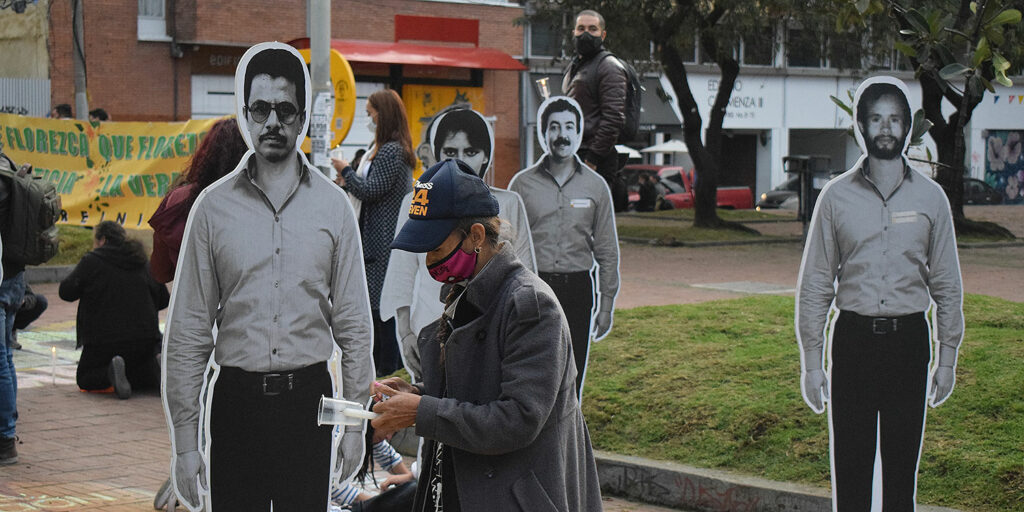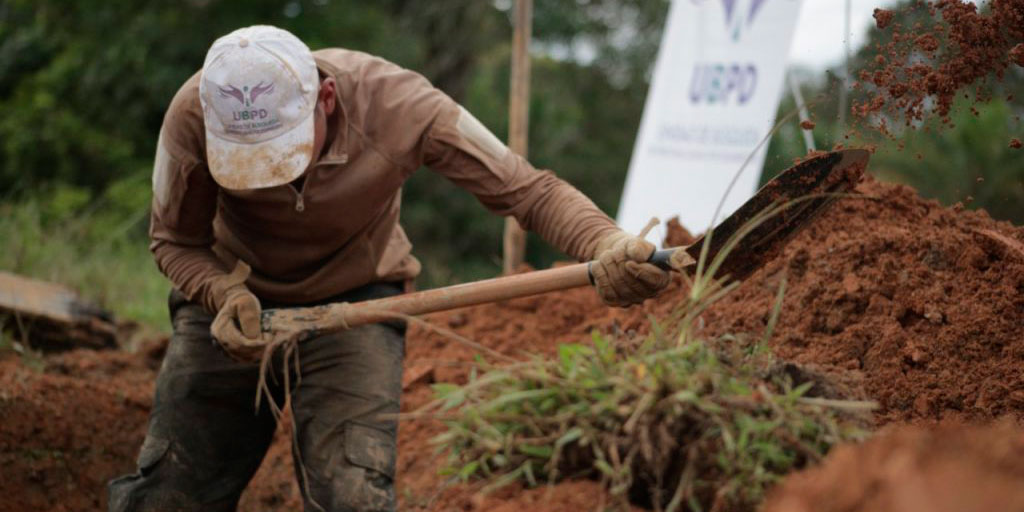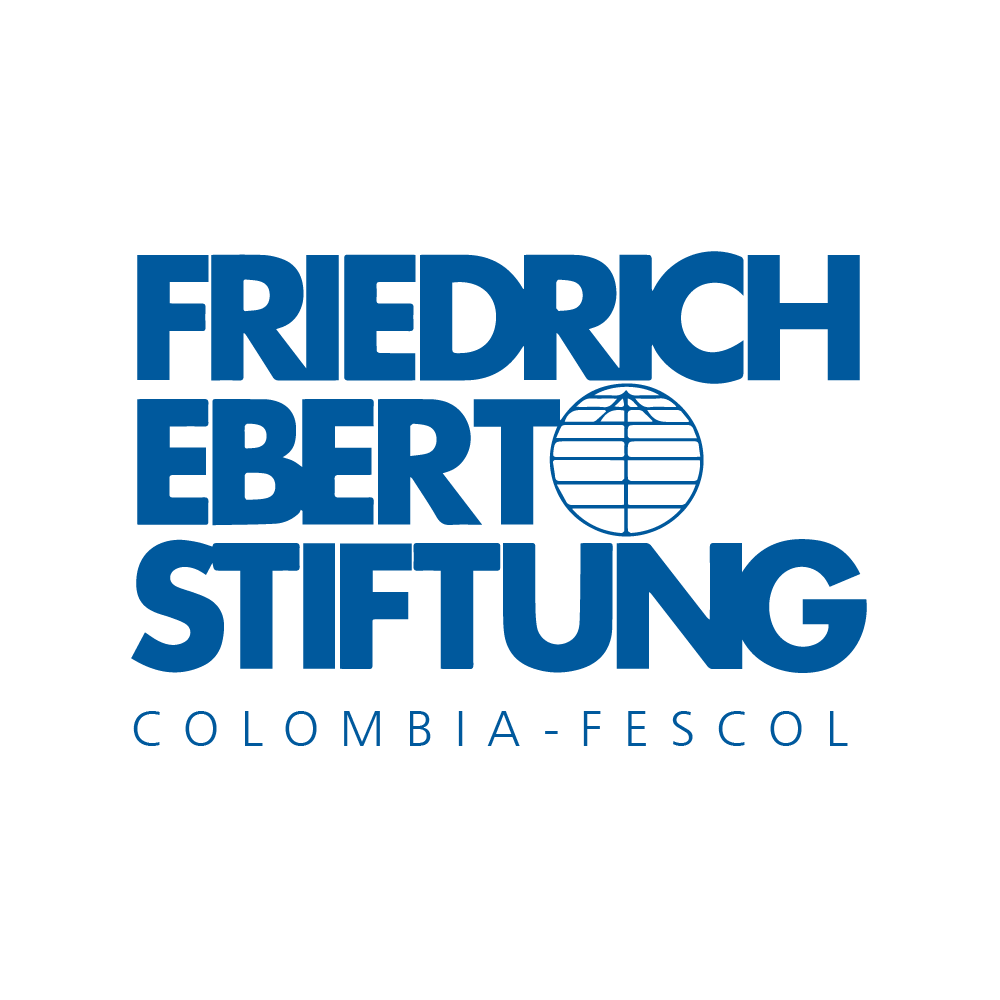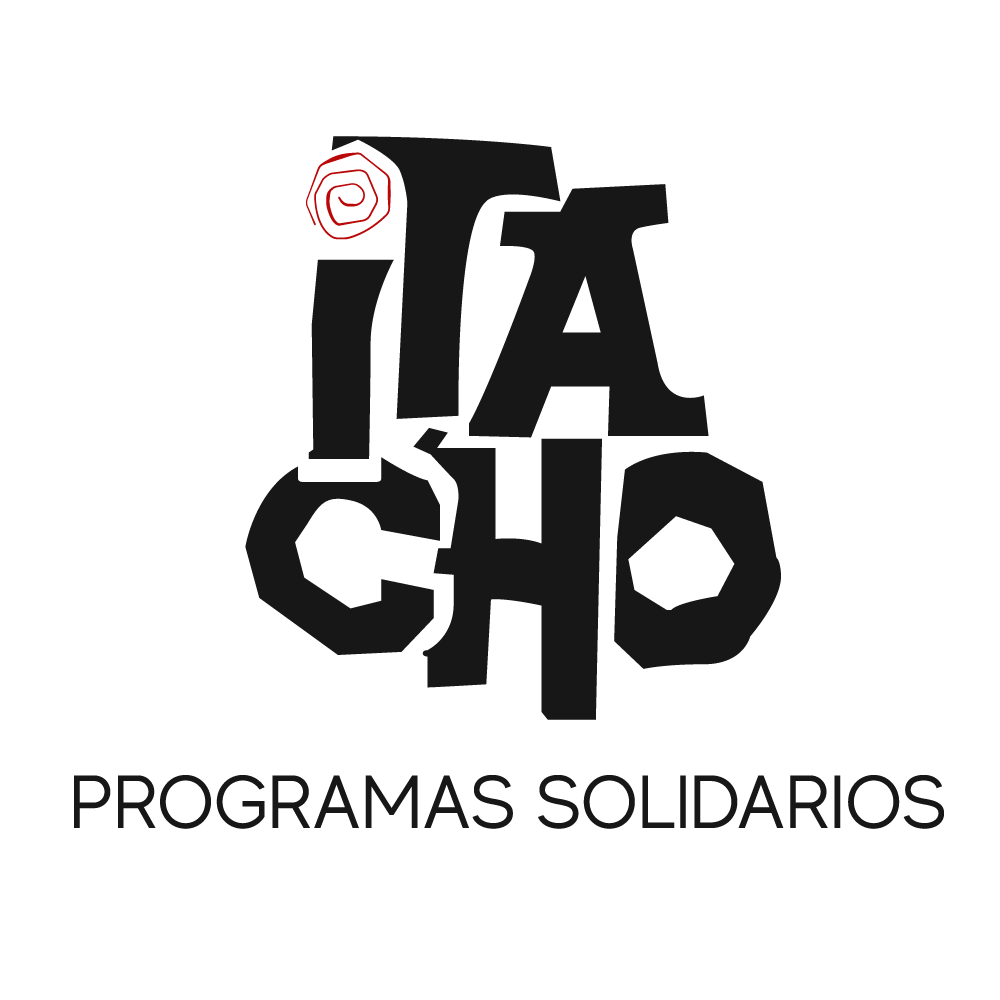One of the components of the Integral System of Truth, Justice, Reparation and Non-Repetition that has been most criticized for its poor results is the Unit for the Search for Missing Persons (UBPD). The expectations generated by its creation contrast with the critical perception of its current work.
Various sectors hoped that an institution specialized in the search for victims of the armed conflict and the recovery of bodies, with a humanitarian and extrajudicial character, would be more agile than the Prosecutor’s Office, which makes its work conditional on a criminal process, but the results contradict that purpose.
Pablo Cala, human rights defender of the Until Find Them Foundation, which fights to find the disappeared left by the war in the region of Guaviare, accompanied the creation of the Search Unit from the very beginning. Speaking on the subject, he recalls the high expectation that generated, in 2017, the creation of that entity, but four years later he regrets that a response in line with those hopes has not been achieved.
“The Unit, in these almost four years of existence, has managed to sensitize society much more to the situation of missing persons,” Cala acknowledges. “It is a work that the organizations had already been doing, that the relatives had already been doing, that some media had already been doing in some way; it is an important work that the Unit does, but it should not be its main focus, it should not be its primary objective and it is where we see the most results”.
According to the UBPD, the number of missing persons in Colombia as a result of the armed conflict is 98,820, a figure that reflects more than 50 years of war in which this crime was used as an instrument of war. And what are the results of the entity?
As of September 30, of this year, the Unit had received 18,344 search requests, corresponding to 13,442 people. In addition, it reports the recovery of 289 bodies and the realization of 127 dignified deliveries of the bodies to their relatives in the regions of Antioquia, Arauca, Bolivar, Bogota, Caquetá, Choco, Cundinamarca, Guaviare, Meta, Northern Santander, Risaralda, Sucre and Tolima.
In addition, it has found five people alive and facilitated reunions with their families in Arauca, Antioquia, Magdalena and Valle del Cauca, ties that had been broken, in some cases, for more than 35 years.
The entity reports that 468 people are registered as voluntary contributors of information for the search of persons reported missing, of which 73 have done so as a collective contribution and 395 as individual contributions.
These achievements have been made despite not having the voices of actors who are not appearing before the JEP or those who benefited from the Justice and Peace law, through which former paramilitaries are being tried. “Since there are no legal incentives for these people with their contribution to the UBPD, there are no major contributions reported by the entity,” the Attorney General’s Office recorded in the Third Report to Congress on the State of Progress of the Implementation of the Peace Agreement, also published in August of this year.
Centralization questioned
One of the biggest criticisms of the UBPD is that the search work of the existing teams is insufficient to deal with the magnitude of the phenomenon in Colombia and is centralized in the city of Bogota.
“These teams are not directly searching for or recovering bodies. They collect information, they transfer it to the central level, they do pedagogy, they make relations with the relatives, but what they were looking for was that, in those territories, they could be carrying out day to day field work search”, Cala explained.
If it works as planned, the UBPD would have, at least, 18 territorial forensic teams with a general coordination. However, this human rights defender estimates that there are between 40 and 50 people in recovery work, and regrets that there is only the capacity to have up to five teams doing field work simultaneously.
The other major problem Cala identifies is the conditions for accessing the sites where there could possibly be bodies. The Unit can enter the sites with the authorization of the possessor, holder or owner, and in cases where the latter refuses, legal action will be sought to gain access.
However, it highlights that in order to enter a place where there are presumed to be graves, the entity created an internal rule that includes requesting the certificate of tradition and freedom of the property or requesting information from the National Land Agency about the type of property. A process that can take months.
“In regard to the will of a land owner, holder or occupant who says ‘yes, they can enter to do the recovery’ but then all these obstacles as requirements are placed, they are likely to get scared and say ‘they are going to end up taking away my little farm, so I prefer that they do nothing,'” this human rights defender questions.
On the other hand, there is participation. This component has been shown as a priority for the UBPD and according to its report of accounts for this year, “for this purpose, since the beginning of operations of the Unit for the Search for Disappeared Persons and until the first half of 2021, advice and guidance was provided to 4,492 people who strengthened the conditions for their participation on an individual basis”.
Several victims consider that the calls to participate by the UBPD have been in terms of good will, but do not end up well directed. They feel that information only circulates in a unidirectional manner, they are not allowed to accompany decisions and participation ends up being subordinated to the will of the entity’s officials.
The analysis of the Attorney General’s Office praises the participation efforts, but “it reiterates the importance of the entity defining a mechanism that facilitates the delivery of information to the families about the persons reported missing as the search process progresses”.
Sebastián Velasquez, legal representative and spokesman for the Colombian Federation of Victims of the FARC (FEVCOL), maintains that this organization delivered to the UBPD in December 2020 information on the existence of 12 graves in which there would be victims of the extinct guerrilla with more than 49 bodies, but there is no progress. “Where are they looking for the victims of the FARC? For them it is not a priority”, he emphasizes.
For her part, María José Rodríguez, daughter of Uruguayan citizen José Washington Rodríguez Rocca, hoped to have more participation in the search for her father. In July 2019 she began to provide information to the UBPD about the case, but then she felt that her relationship with the Unit stopped without much reason. “To me personally it demotivated me a lot and little by little, with insistence, we managed to resume the dialogue,” she says.
Rodríguez Rocca was a worker at the Uruguayan Tire Factory S.A. (FUNSA) and was part of the Tupamaros National Liberation Movement. When he saw no guarantees for his life and faced with the expectation of a coup d’état, he left the country in 1973 and, according to his daughter’s information, after passing through several countries he arrived in Colombia in 1976, where he joined the M-19 guerrilla movement. It seems that in April 1982 he died in a confrontation with the Army in the region of Caquetá.
The UBPD promised to carry out prospecting actions at the end of February or beginning of March of this year, but Rodriguez complains that it did not comply with the agreement and after insisting a lot to the entity, the mission took place on July 19, 20 and 21. She was able to attend thanks to the support of the ICRC, which gave her financial help to come to the country: “I do not live in Colombia, so the distance generates other feelings and other times that are not good allies in these searches”.
On that occasion they did not find her father’s remains, but they did find the grave in which it is believed he was buried. She highlights the great treatment she received during the prospecting, but after that “silence returned again. This was in July and as of today we have not had a meeting, not even as a resolution of what happened in July and what the next steps will be”.
Information to search for

Victims and civil society organizations consider that the UBPD has not made real use of the legal mechanisms of access to reserved information granted to it by Decree Law 589 of 2017, through which the structure of the entity was organized.
This decree clearly states that reservations regarding access to information are not opposable in the case of human rights violations or breaches of International Humanitarian Law (IHL) and that the UBPD is free to request public information from State entities without the reservation of information being an obstacle.
The Attorney General’s Office, in its analysis of the implementation of the Peace Agreement, states that the UBPD has seven agreements of willingness to exchange information with various State institutions. However, it evidenced that the flow of information has not been as expected. An example of the above is the case of the inter-administrative agreements signed since 2019 between the Unit and the Prosecutor’s Office.
“While the Prosecutor’s Office has responded to most of the requests for basic information made by the UBPD,” reads the document, “regarding the file number, office or Unit in which a case is located, there are very few responses that the Prosecutor’s Office has given regarding access to active files related to crimes of enforced disappearance, kidnapping and illegal recruitment. In particular, out of 308 requests for access to files, as of the cut-off date of this report, the UBPD had been able to access only 11 of the requested files”.
The victims hoped that the Unit would quickly access information that is in the hands of the security forces, a fundamental step, they say, to establish the whereabouts of persons disappeared by state agents, mainly in the decades from the seventies to the nineties.
This information would be useful, for example, to establish the whereabouts of the body of Martha Gisela Restrepo Valencia, a young woman from Cali who joined the ranks of the M-19 and who died, at the age of 19, presumably in an operation by the Military Forces in the region of Chocó, on April 25, 1981.
The reconstruction of that attack, carried out by Martha Gisela’s family with the support of the Until We Find Them Foundation, states that at least 40 young members of that guerrilla group were moving between the municipalities of Lloró and Bagadó, and at some point in Alto Andágueda they were intercepted by Army troops and annihilated.
Rodrigo Restrepo, Martha Gisela’s brother, speaks from outside Colombia about how he revisited the case of his sister’s forced disappearance in 2015. Like Martha and another of his brothers, he was a militant in the ranks of the M-19, but he was the only one who managed to keep his life when he migrated in September 1982.
When on October 17, 2015 the national government and the FARC announced the creation of the UBPD, the Restrepo Valencia family saw in that entity an invaluable opportunity: “Before that, it was very difficult to imagine that one would go looking for a combatant who had disappeared. When that announcement is made, well, for us it was the perfect instrument to be able to carry out that search and it opened all hopes.”
In December 2018, this family began sharing information with the Unit that they had gathered on their own. At the beginning of 2019, hand in hand with Until We Find Them, they organized a visit to where Martha Gisela’s remains were presumed to be to track down information with some delegates from the Consejo Comunitario Mayor of the Alto Atrato Peasant and Popular Organization (COCOMOPOCA), since the area is under their ancestral authority.
At that time, the UBPD declined the invitation, as this family recalls, because the entity was not yet ready for this type of work. Back in Bogota, they shared the information with the Unit and based on it, in March 2020, conducted a survey in an area of almost two hectares with anthropologists, surveyors and photographers.
“In that kind of situation, the tension is great, the sensitivity of everyone is much greater, that of the relatives, that of us, the sensitivity is at the surface,” recalls Rodrigo and highlights that that time a disagreement was generated with the UBPD because they did not let them record the procedure. “We witnessed the effort that was made, however, nothing was found”.
In this regard, Cala emphasizes that this was the first direct prospection made by the Search Unit without associating with another entity: “It has made other prospections since March to now in an autonomous way, several in different places, but still not within the dimension of response expected or due to the dimension of the situation of people found in the country”.
The universe of missing people
The Inter-American Convention on Forced Disappearance of Persons established forced disappearance as “the deprivation of liberty of one or more persons, in whatever form, committed by agents of the State or by persons or groups of persons acting with the authorization, support or acquiescence of the State”. In the Colombian case, forced disappearance was only criminalized by Law 589 of 2000.
Despite this, there is no consistency in the figures, a situation that Cala highlights: “In the country there is a problem now: there is an institution that says there are 24 thousand forced disappearances, another says there are 46 thousand, another says there are 60 thousand, others say there are 89 thousand and another says there are 120 thousand or more. And that is part of the debt that exists in the face of an exercise of trivialization of the responsibility that the Colombian State has made”.
An observation that the UN Committee on Enforced Disappearances had already raised in its most recent report of recommendations for Colombia, published in May of this year, in which it reminds the Colombian State that its approach to this crime against humanity does not fully comply with international standards.
By September 2021, the UBPD estimated the universe of victims at 98,820 people, a figure that results from crossing information from the databases of the Integral System for Peace with the Unit’s Registry of Search Requests. (Read more in “The disappeared are not only of the families, the disappeared are of this society”: Luz Marina Monzón)
Participation of ex-guerrillas

The way in which former FARC combatants are involved in the search for the disappeared can be in several ways. On the one hand, because they may have information on people who died under their responsibility, having been recruited, deprived of their freedom or executed.
On the other hand, because they have knowledge of areas with bodies that were not necessarily their responsibility, but which were in areas they controlled. Also, because they are looking for militiamen, ex-militiamen or relatives of guerrillas who were executed and disappeared by the Colombian State or paramilitary actors.
One of the roles being developed by the signatories of the Agreement, as part of their reincorporation process, is the collection of information on missing persons as part of the component of the former FARC of the Commission for the Search for Missing Persons, which through five work zones (Northeast, East, Middle Magdalena, South and West) seeks to cover the national territory.
Initially, 72 former guerrilla signatories of the Peace Accord began a training process with the International Committee of the Red Cross (ICRC) to begin this documentation work. Currently, the Commission has 101 members, including former combatants of the former FARC and inhabitants of some regions committed to this process.
Velasquez, from FEVCOL, strongly criticizes this Commission, as he considers that the families who lost their loved ones at the hands of the FARC will not contribute with them and considers that its management is questionable because “it would be self-blame for a systematic crime such as the kidnapping, disappearance and death of many people”.
Up to September, the Commission documented 586 possible cases of missing persons. This information was delivered to the Unit to activate the route on these records. In this regard, John León, coordinator of the Commission, considers that the articulation with the UBPD has been positive even though they do not have the resources to carry out these tasks and have used their protection schemes to move around the country.
“It must be said that there are a series of delays that, to a certain extent, generate concern, that put victims and relatives who are looking for people who are missing on alert, above all, and that includes former FARC combatants who are looking for our loved ones who disappeared in the context of the conflict,” said León.
Restrictions in the field
The expansion of Covid-19 slowed down the actions of several institutions, but none was as affected as the UBPD’s work in the field. The restrictions to prevent contagion forced the Unit to prioritize the work of contrasting information and processing search requests which, by mid-June this year, exceeded 16,000.
During this time, it delivered recommendations for the protection and preservation of bodies of people who could correspond to missing persons and remain in different cemeteries in the country, strengthened through precautionary measures that have been advanced in coordination with the JEP for their protection.
On the other hand, the levels of violence and territorial control of illegal armed actors in different regions where the Search Unit must carry out its humanitarian work, as well as the building of trust with the communities, has been one of the most worrisome obstacles.
The signatories of the Agreement who have advanced collection work in regions such as Meta, Arauca, Nariño, Cauca or Antioquia expressed “the presence related to the search for missing persons is not very well received”.
The former FARC component of the Commission for the Search for Missing Persons has denounced that its members have been persecuted, threatened, harassed and even attacked, as was the case of the shooting of Jaime Alberto Parra Rodriguez, also known as ‘Mauricio Jaramillo’, national in charge of the FARC Search Commission, on August 19 of this year in Popayan, Cauca.
The Attorney General’s Office acknowledged the risk scenario and added one more that complicates these tasks: “The presence of antipersonnel mines and explosive devices in the territories, which puts at risk the officials of the entity who travel to carry out actions of location, prospecting or recovery of bodies. It is important for the UBPD to coordinate with the Office of the High Commissioner for Peace (OACP), as coordinator of the Integral Action against Mines, to guarantee a minimum level of protection when carrying out work in the field”.
Actions to improve the search
“Where is the search strategy?” asks Diana Arango, director of Equitas, an organization dedicated to the location of missing persons from the application of various areas of knowledge.
“I believe that one of the big problems of the Search Unit is that there is no clear search strategy”, and that is why she considers that it is not clear how to implement the search in territory, how to deploy the teams of the institution and prioritize regions of the country that have high cases of disappearance.
According to the Unit, there is a National Search Plan (PNB) and 22 regional search plans that are considered participatory planning tools that allow the collection of information, localization, prospecting, recovery and dignified delivery in a delimited and differentiated geographic region.
Regarding the PNB and its regional chapters, one of the alerts was issued at the end of 2020 by the Kroc Institute of the University of Notre Dame, in its follow-up to the implementation of the Peace Agreement. In its judgment, the Search Unit had not outlined a timeline for its implementation.
This flaw began to be corrected in June of this year, with 10 meetings with victims and civil society organizations and 16 meetings with State entities, in which it outlined the goals, responsibilities and timetable of the PNB. Thus, in the short term, 1,754 persons reported missing in 20 regions of the country will be sought.
It is clear that the search is not simple, but “it is not a task that can be tackled case by case because then we will never finish,” warns the director of Equitas. For Arango, prioritizing the consolidation of the universe of victims is one of the key points to achieve greater results, but she is concerned that only until a few months ago the discourse of the director of the UBPD, Luz Marina Monzón, alluded to massive searches.
“The regional plans should not be based only on the request made by the victims, but the Unit, so to speak, should be investigating ex officio, and that is what the analysis and cross-checking of different databases is for, which allows it to establish that in Antioquia, for example, there are 36,000 people who are still missing to date,” Arango says.
While the Unit’s work takes off, the victims and their organizations will continue to advocate for the UBPD to deliver better results and for their loved ones to be found in order to dignify their memory and honor their lives.
*VerdadAbierta.com attempted to interview Luz Marina Monzón, director of the UBPD, but at the time of going to press the institution had not set a date for a meeting.




